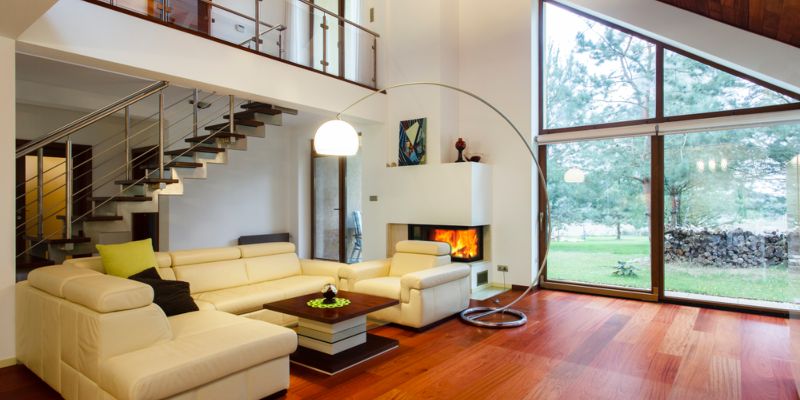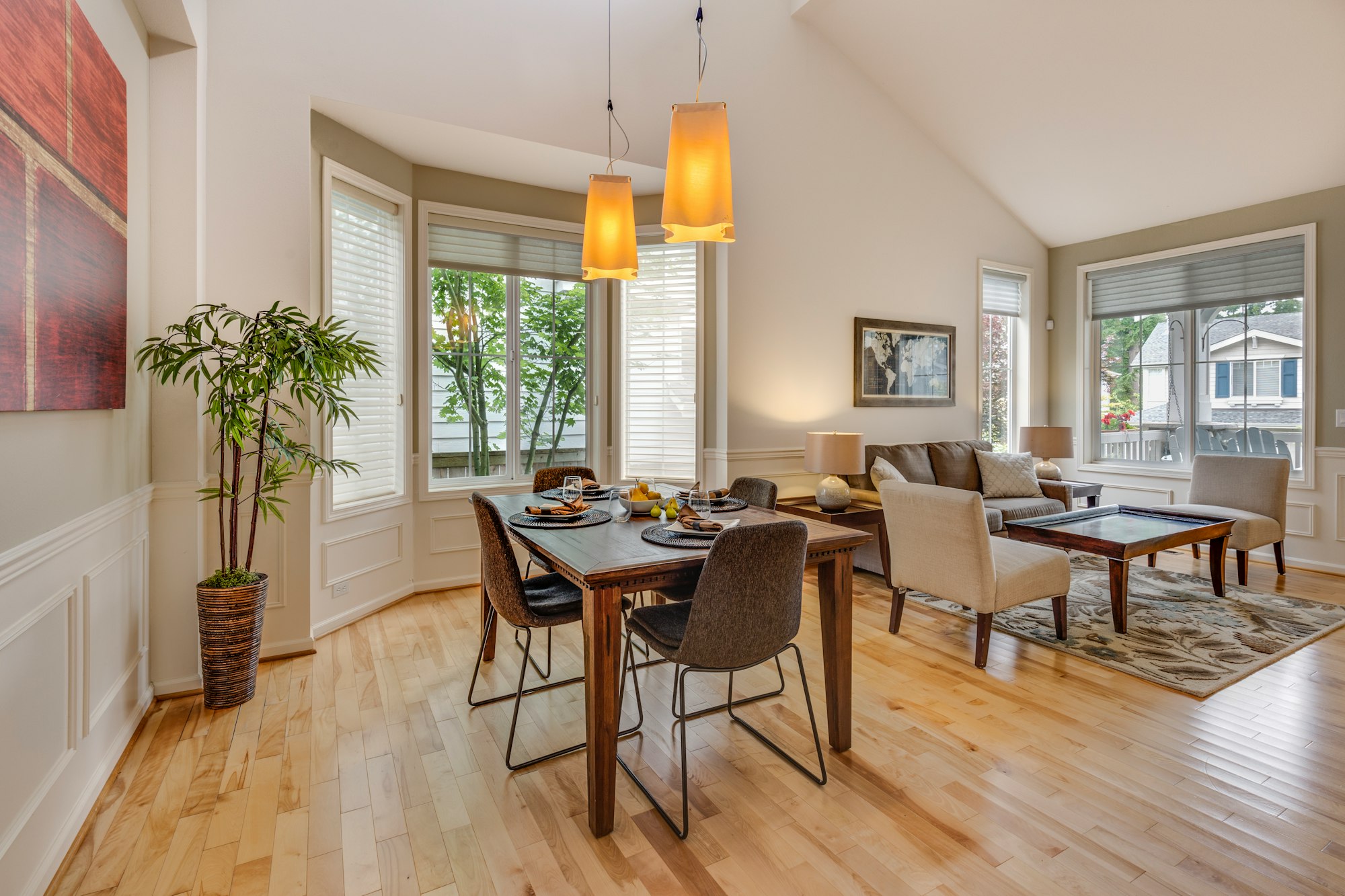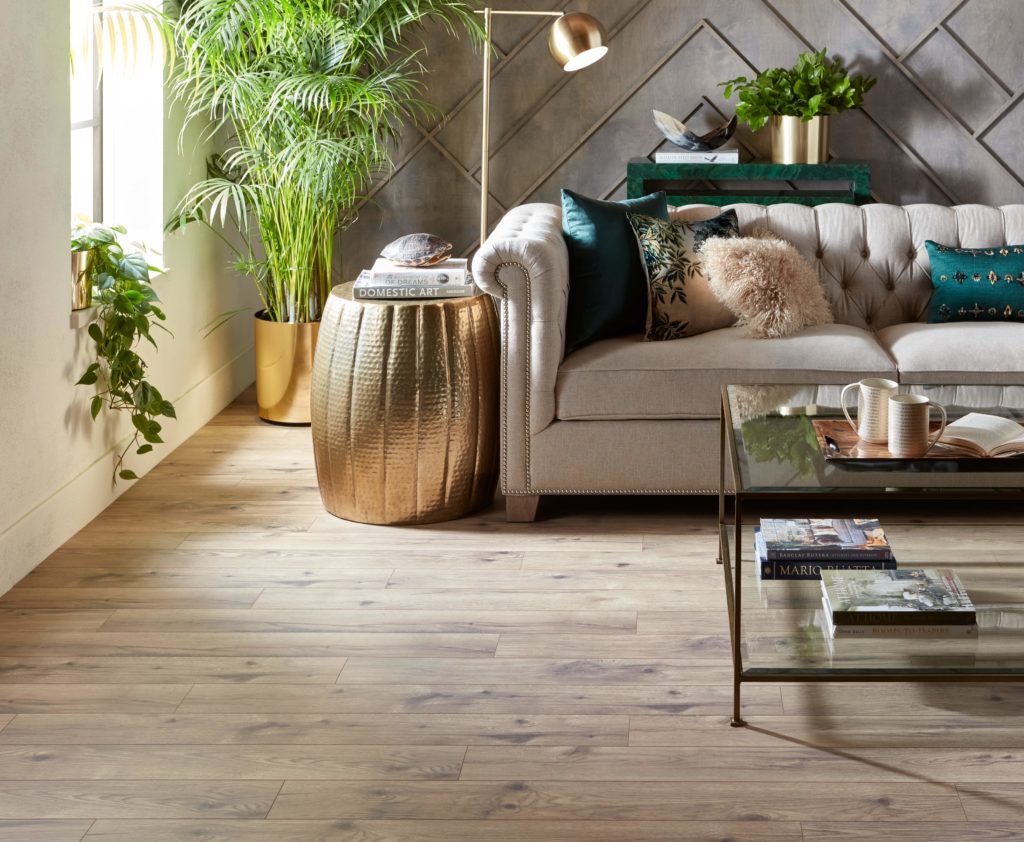When it comes to choosing the right flooring for your home, there’s a lot to consider. And let’s be honest, it can feel a bit overwhelming. But don’t worry, we’ve got you covered! In this article, we’ll break down the best flooring options for each room in a conversational and easy-to-understand way. So grab a cup of coffee and get ready to learn more about how to choose the perfect flooring for your kitchen, living room, basement, balcony, bedroom, and bathroom.
Let’s start with the kitchen, shall we? It’s the heart of many homes and a place that sees a lot of foot traffic and spills. Hardwood floors are a classic choice that can complement any kitchen style. But if you’re worried about moisture, engineered wood or porcelain and ceramic tiles can be great alternatives. Moving on to the living room, comfort and durability are key. Hardwood floors are again a popular option, but if you’re on a budget, laminate flooring can give you the look of real wood without breaking the bank. And for a cozy atmosphere, consider a plush carpet.
Choosing the right flooring for each room is important to both the function and style of your home. In this article, we’ll guide you through the best flooring options for your kitchen, living room, basement, balcony, bedroom, and bathroom. Each room has its own unique considerations, so it’s essential to take a distinct approach when selecting flooring. For example, in the kitchen, you’ll want a flooring material that can handle high foot traffic, spills, and various temperatures. Hardwood floors offer a timeless, warm aesthetic that can complement any kitchen style. But if you prefer something more moisture-resistant, engineered wood or porcelain and ceramic tiles are excellent alternatives. We’ll dive into more detail on each room and its specific flooring needs, so keep reading to find the perfect flooring solution for every space in your home. Choosing the right flooring for your home can significantly influence both its appearance and functionality. Your choice will often depend on the specific room in question – the kitchen, living room, basement, balcony, bedroom, or bathroom. Each room has its unique considerations and demands, requiring a distinct approach when choosing flooring.

Kitchen
Let’s begin with the kitchen – the heart of many homes and a place that experiences high foot traffic, spills, and various temperatures. Hardwood floors offer a timeless, warm aesthetic that pairs well with many kitchen styles, from rustic to modern. The natural beauty of hardwood can add character to your kitchen and increase the overall value of your home. However, it’s important to note that hardwood floors are susceptible to scratching and water damage, so proper care is necessary.
If you love the look of hardwood but are concerned about moisture, engineered wood can be an excellent alternative. Made with a top layer of real wood and multiple layers of plywood or high-density fiberboard underneath, engineered wood offers a similar look to hardwood with more resistance to moisture. This makes it a suitable choice for kitchens where spills are common.
Alternatively, porcelain or ceramic tiles are hard-wearing, easy to clean, and come in a vast array of styles. These tiles are highly durable and can withstand heavy foot traffic. Additionally, they resist stains and water, making them a practical choice for kitchens. With modern advancements in tile technology, you can find tiles that mimic the look of natural materials like wood or stone, allowing you to achieve the desired aesthetic without the maintenance concerns.
Recently, luxury vinyl flooring has also gained popularity in kitchens. It offers a high level of durability, water resistance, and affordability. Luxury vinyl comes in various styles, including those that mimic hardwood or tile, giving you plenty of design options. It’s easy to clean and maintain, making it a practical choice for busy kitchens.
Living Room
The living room is where you welcome guests and gather with family. Comfort, style, and durability are all important factors here. Again, hardwood floors shine in this space, offering both elegance and longevity. Hardwood floors in the living room can create a warm and inviting atmosphere that complements various design styles. They are easy to clean and maintain, making them a popular choice among homeowners.
If you’re after a more budget-friendly option, consider laminate flooring. Today’s high-quality laminate options can closely mimic the look of real wood, giving you the aesthetic appeal at a fraction of the price. Laminate is also durable and resistant to scratches, making it suitable for high-traffic areas like the living room.
Alternatively, a plush carpet can create a warm, cozy atmosphere in living areas. It provides a soft and comfortable surface underfoot, making it ideal for lounging and relaxation. Carpets also come in a wide range of colors, patterns, and textures, allowing you to customize the look and feel of your living room. However, it’s essential to keep in mind that carpets may require more maintenance to keep them looking fresh, including regular vacuuming and occasional professional cleaning.
Basement
The basement often serves as a multi-purpose space and can be challenging to choose the right flooring for. One of the primary concerns in basements is moisture, as they are located below ground level and can be prone to dampness. Therefore, it’s important to select flooring that can handle these conditions.
Vinyl flooring is a great choice for basements. It’s water-resistant, affordable, and available in a variety of designs. Vinyl flooring is easy to clean and maintain, making it ideal for basement areas that may be prone to spills or moisture. It also provides a comfortable surface underfoot, making it suitable for playrooms or exercise areas.
Similarly, ceramic tiles (particularly those rated for frost resistance) can work well in basements. They are highly durable, moisture-resistant, and can withstand heavy foot traffic. Ceramic tiles come in a wide range of colors and styles, allowing you to create a customized look for your basement.
If you desire the look of wood in your basement, consider engineered wood flooring with a moisture barrier. This type of flooring combines the aesthetic appeal of hardwood with the added benefit of moisture resistance. The moisture barrier layer helps protect the wood from potential water damage, making it a suitable choice for basements.
Balcony
The balcony presents a unique set of challenges, including exposure to the elements. It’s crucial to choose flooring that can withstand outdoor conditions such as sunlight, rain, and temperature variations.
Outdoor tiles, such as porcelain, slate, or granite, can be excellent choices due to their durability and wide range of styles. Porcelain tiles, in particular, have a low water absorption rate, making them resistant to freeze-thaw cycles and ensuring their longevity. Slate or granite tiles can provide a natural, earthy look to your balcony while offering excellent durability.
Wooden decking is another popular option for balconies. It provides a warm, inviting look and creates a seamless transition between indoor and outdoor spaces. However, wood decking requires regular maintenance, including sealing and staining, to protect it from the elements. It’s important to choose hardwood species that are resistant to rot and pest infestations.
If your balcony is covered, you might also consider outdoor rugs to add a cozy touch. Outdoor rugs can withstand exposure to sunlight and rain, making them a practical choice for balconies. They come in various colors and patterns, allowing you to personalize your outdoor space.

Bedroom
In the bedroom, comfort underfoot is often prioritized. Waking up and stepping onto a soft, comfortable surface can enhance your morning routine. Carpeting is a popular choice due to its softness and warmth, providing a cozy feel when you first step out of bed. It also acts as an excellent sound insulator, reducing noise from footfalls and improving acoustics in the room. Carpeting comes in a wide range of colors and textures, allowing you to create a soothing and comfortable sanctuary.
However, if allergies are a concern, hard-surface flooring like hardwood or laminate can be a better choice. Allergens like dust and pet dander can be trapped in carpets, aggravating allergy symptoms. Hardwood or laminate flooring is easier to clean and maintain, reducing the accumulation of allergens in the bedroom. You can still achieve warmth and comfort by adding area rugs on top of the hard surface. Area rugs provide a soft surface underfoot and can be easily cleaned or replaced.
Bathroom
The bathroom is a high-moisture environment that requires water-resistant flooring. The frequent use of water, humidity, and potential spills make it crucial to choose a flooring material that can withstand these conditions.
Ceramic and porcelain tiles excel in this environment, offering excellent water resistance and a clean, modern look. These tiles are highly durable, easy to clean, and available in a wide range of colors and patterns. They can also be slip-resistant, making them safer for wet areas like bathrooms.
Natural stone tiles, such as slate or marble, can also work well in bathrooms. They provide a luxurious and elegant look, adding a touch of sophistication to the space. However, it’s important to note that natural stone requires more maintenance compared to ceramic or porcelain tiles. Regular sealing is necessary to protect the stone from water damage and staining.
If you want a warmer, softer feel underfoot in your bathroom, consider luxury vinyl tiles. Luxury vinyl tiles (LVT) offer the look of natural materials like wood or stone with the added benefit of moisture resistance. LVT is comfortable to walk on, easy to clean, and can withstand humid conditions without warping or expanding.
Another option to consider is cork flooring. Cork is naturally resistant to moisture and provides a unique, cushioned feel underfoot. It’s a sustainable flooring choice and offers thermal insulation, keeping your bathroom floor warm during colder months. However, it’s important to ensure proper sealing and maintenance to prevent water damage.

Conclusion
Choosing the right flooring for each room in your home is essential for creating a functional and aesthetically pleasing space. Consider the specific demands and requirements of each room, such as moisture resistance, durability, and comfort. Whether you opt for hardwood floors, engineered wood, tiles, vinyl, carpeting, or a combination of these, make sure to select the flooring that suits your lifestyle, budget, and design preferences. With the right flooring choices, you can transform your home into a comfortable and stylish sanctuary.